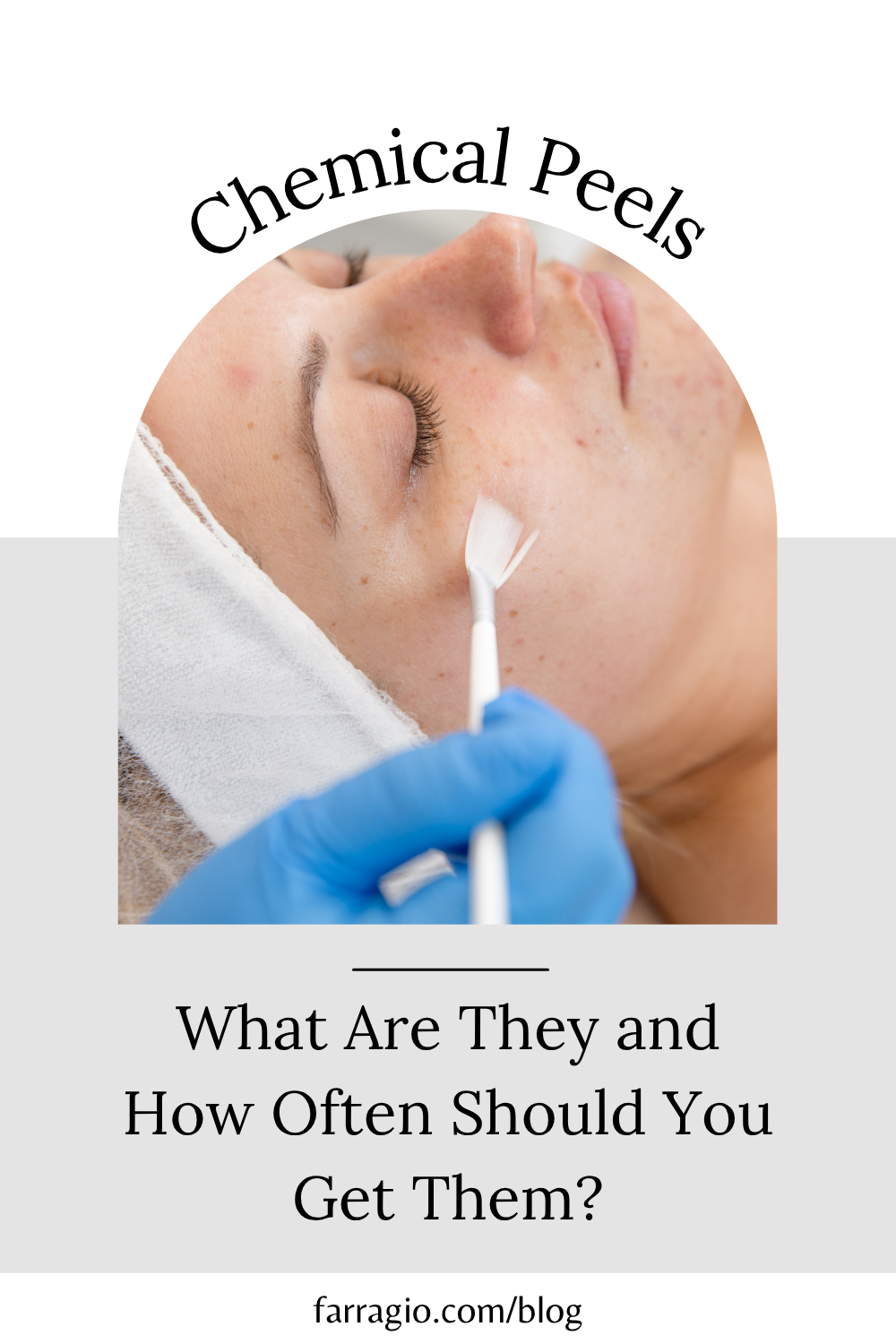Chemical Peel Treatments: Types, Benefits & How Often to Get
If you're looking to improve skin tone, reduce signs of aging, or treat acne scars, chemical peels are one of the most effective skin treatments available today. Despite some intimidating images online, chemical peels are a safe and powerful way to rejuvenate your skin and reveal a brighter, smoother complexion.
In this guide, we’ll cover the different types of chemical peels, how they work, who they’re best for, and how to care for your skin post-treatment.
What Is a Chemical Peel?
A chemical peel is a cosmetic procedure that uses a chemical solution to exfoliate and remove the top layer of skin. This process stimulates new skin cell growth, resulting in a smoother texture, even skin tone, and reduction in imperfections like fine lines, sun spots, and acne scars.
The type and strength of the solution used will vary depending on your skin type, specific concerns, and the recommendations of your skincare professional.
Types of Chemical Peels
There are three main types of chemical peels—light, medium, and deep—each designed to target different skin issues and offer varying degrees of exfoliation.
1. Deep Chemical Peels
Deep chemical peels are the most intense and penetrate multiple layers of skin. These peels are ideal for:
Deep wrinkles and fine lines
Severe sun damage
Prominent acne scars
Uneven skin texture
A strong solution like phenol is used, and pre-treatment (such as retinoic acid) is often required to prepare your skin. While the recovery time is longer, the results can last up to 10 years, making it a worthwhile investment for those with advanced signs of aging or skin damage.
2. Medium Chemical Peels
Medium peels use trichloroacetic acid (TCA) to remove the outer and middle layers of skin. They are great for:
Treating uneven pigmentation
Reducing dark spots
Smoothing rough skin
Minimizing acne scars and fine lines
You might experience redness and peeling for several days. Results can last around 4 months, with most professionals recommending a 6-month interval between treatments.
3. Light Chemical Peels
Light chemical peels (also called superficial peels) are a gentle yet effective option for:
Brightening dull skin
Evening out skin tone
Improving mild discoloration
Smoothing texture
Common ingredients include salicylic acid, lactic acid, and fruit-derived enzymes. These peels are perfect for darker skin tones, sensitive skin or first-time users, and they typically require minimal downtime.
At-Home Chemical Peels
For more gradual results, at-home chemical peels are a convenient and budget-friendly alternative. These are much milder than professional treatments but can still improve tone and texture with consistent use.
Popular Options:
Lactic acid peels – Ideal for dry or sensitive skin.
Glycolic acid peels – Great for oily or acne-prone skin.
These peels can typically be used every 2 to 4 weeks, but always consult a dermatologist before starting an at-home routine to ensure safety and effectiveness for your skin type.
How Often Should You Get a Chemical Peel?
The frequency of chemical peels depends on their strength and your skin goals:
Deep Peels – Once every 8–10 years
Medium Peels – Every 4–6 months
Light Peels – Every 4–6 weeks
At-Home Peels – Every 2–4 weeks (depending on sensitivity)
Always allow proper healing time between treatments and follow aftercare instructions to maximize results and protect your skin barrier.
Chemical Peel Recovery and Aftercare
After a chemical peel, your skin becomes more sensitive and vulnerable. Recovery varies based on the intensity of the treatment:
Deep peels – 2 weeks or more
Medium peels – About 5 days
Light peels – 1 to 3 days
Common side effects include:
Redness and peeling
Temporary dryness or flaking
Increased sun sensitivity
To soothe and protect your skin post-treatment, use a gentle, hydrating moisturizer like the All-Natural Ultimate+ Daytime Face Cream from farragio. It helps maintain moisture, supports skin healing, and strengthens your natural skin barrier.
Additionally:
Avoid sun exposure
Apply broad-spectrum SPF
Avoid harsh products or exfoliants during recovery
Should You Try a Chemical Peel?
If you're looking to:
Fade dark spots or acne scars
Smooth out fine lines
Brighten dull or uneven skin
Improve overall skin tone and texture
…then a chemical peel could be a highly effective treatment for you. Whether you opt for a professional-grade deep peel or a gentle at-home acid treatment, chemical peels can be a valuable part of your anti-aging and skin-brightening skincare routine.
Final Thoughts
Chemical peels are a time-tested and dermatologist-approved way to achieve radiant, youthful-looking skin. With options available for every skin type and concern, these treatments offer visible results and long-lasting benefits.
Be sure to consult a skincare professional to determine the best peel for your needs—and don’t forget to follow proper aftercare to keep your skin glowing and healthy.
Ready to transform your skin? Try incorporating a chemical peel into your beauty routine today.
Pin to Pinterest
Pin this gem to your Pinterest so it’s just a click away when you need it!

